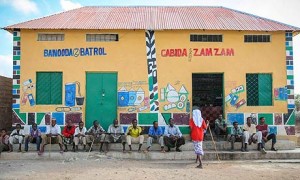19 Apr 2013
Somalia will present a challenging case but Mogadishu has enthusiastically embraced the state-building framework
Mark Tran
 Somalia is emerging as a litmus test for the new deal for fragile states as officials gather in Washington on Friday to discuss how the approach can be incorporated into the development agenda when the millennium development goals expire in 2015.
Somalia is emerging as a litmus test for the new deal for fragile states as officials gather in Washington on Friday to discuss how the approach can be incorporated into the development agenda when the millennium development goals expire in 2015.
The new Somali government has enthusiastically embraced the new deal and created a taskforce, bringing together the government, lead donors (the US, UK, EU, Norway and Denmark), the World Bank and civil society.
One of the taskforce’s first jobs is to assess the causes and features of fragility and conflict. This is more than an academic exercise. On Sunday, at least 35 people – including two human rights lawyers – were killed in the deadliest Islamist militant attack in years in Mogadishu, the capital. Such a fragility assessment is supposed to be inclusive of the Somali population, but the existence of al-Shabaab, the insurgency group, will pose tests for inclusiveness, though there are some early signs that the national army is beginning to deliver security.
Somalia is the ninth developing country to adopt the new deal since it was endorsed at an aid effectiveness conference in Busan, South Korea, in 2011. The new deal, put forward by the g7+ group of 19 conflict-affected countries, is supposed to put developing countries in the driving seat on development strategy. At its core are five peace-building and state-building goals: legitimate and inclusive politics; security; justice; economic foundations (jobs); and revenues and services (managing revenue and delivering accountable and fair services). The thinking behind the new deal is that unless aid focuses on peace, money will go to waste.
Ahead of the meeting in Washington, Sierra Leone’s finance and economic development minister, Kaifala Marah, said progress on the new deal has been sluggish. A common complaint – in addition to declining aid flows – from developing countries is that donors remain reluctant to shed the old approaches, including using their own consultants and foreign advisers, instead of using recipient country systems. The use of parallel systems – which duplicate existing resources, are expensive and do not build expertise in developing countries – boils down to a lack of trust, especially as donors are under domestic pressure to show value for money in aid budgets.
Adopting systems in recipient countries does not necessarily mean handing over money for general budget support. Other measures include discussing budgets in parliament rather than deciding them in the donor country, using countries’ own measurement and evaluation systems instead of sending in consultants to serve only donors’ needs, and donors making information on aid figures readily available.
“The question is how the systems are used, how the risk is managed, how quickly problems can be identified and addressed, and seeing the development of systems to deliver, track, hold to account, monitor and evaluate public monies and public policies as a development aim in itself,” an aid expert said. “Mismanagement and corruption also happens outside of country systems – and in addition, the systems are not strengthened either – as was so evident in Afghanistan with the use of consultancy firms that were accountable, in the end, to no o Continued

No comments:
Post a Comment